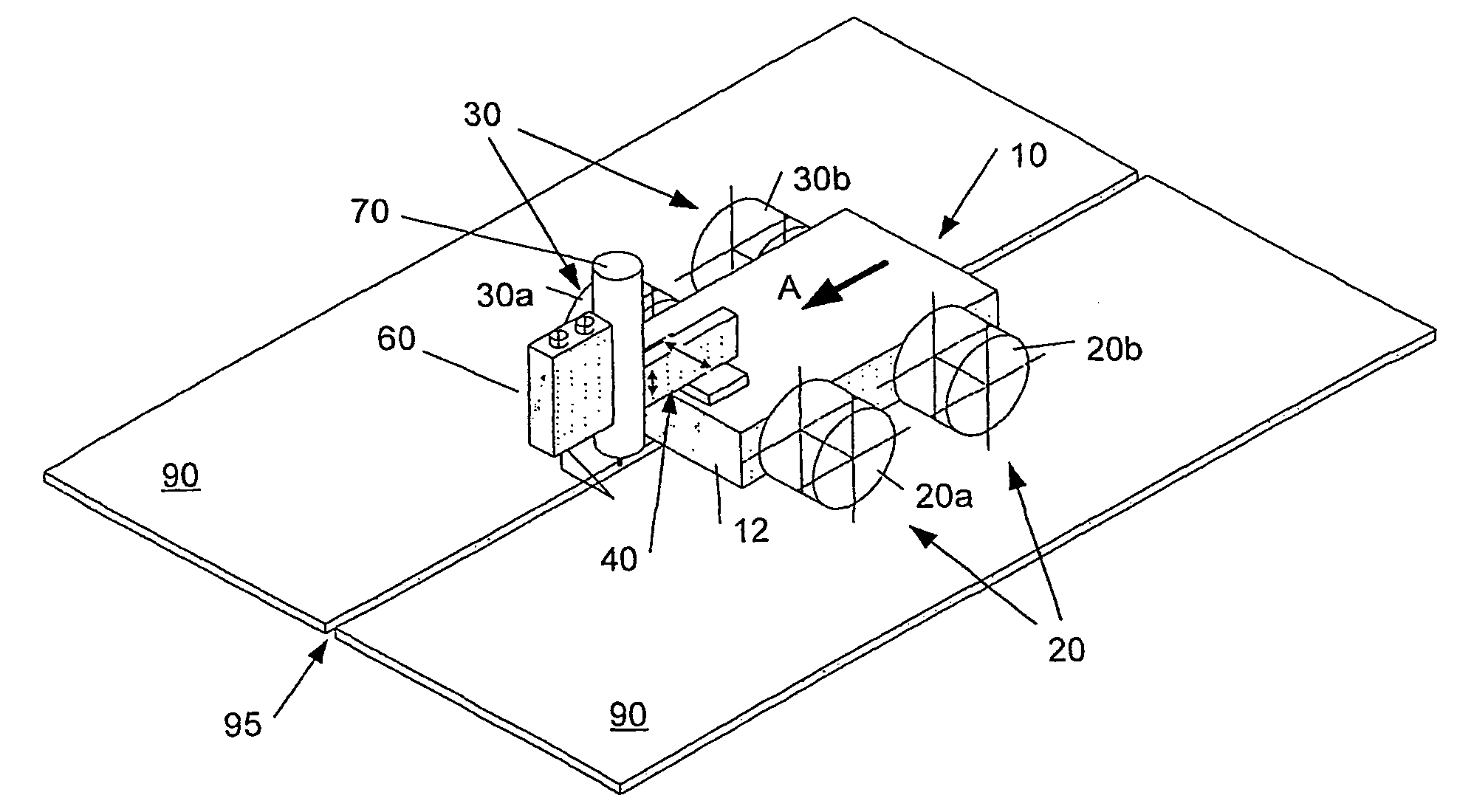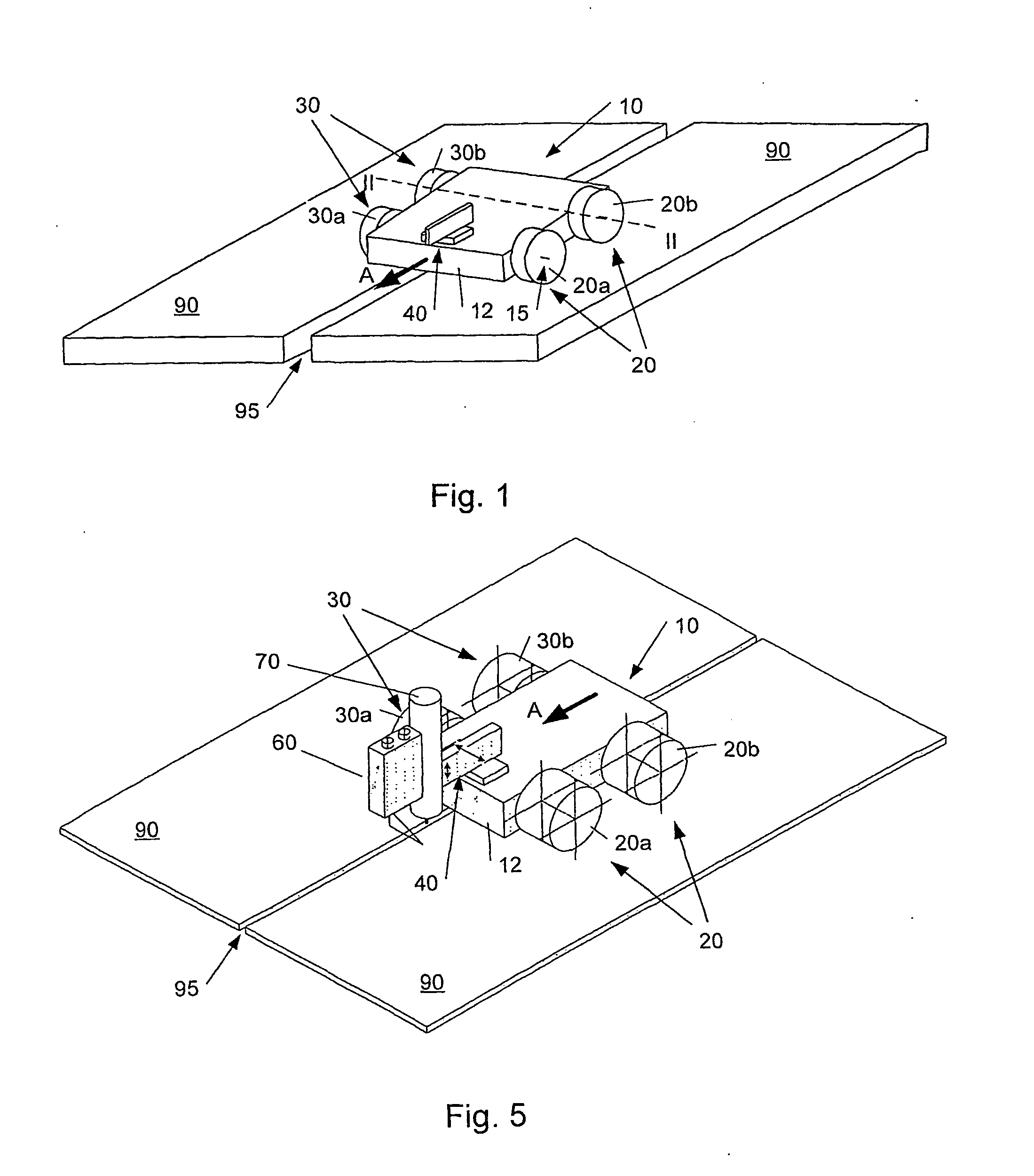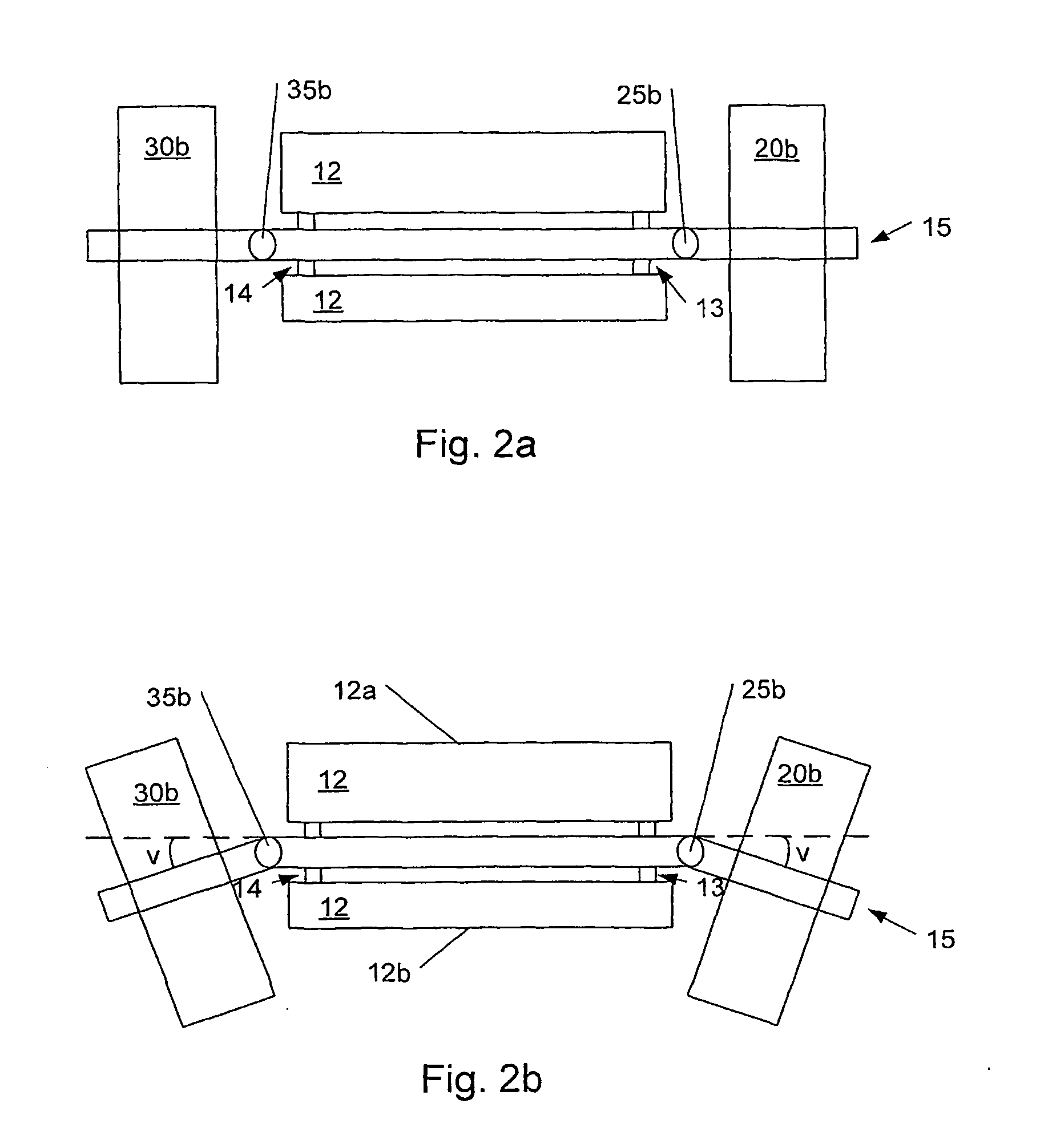Carriage for Automating Welding, Brazing, Cutting and Surface Treatment Processes
a technology for automating welding and brazing, applied in the direction of soldering media, workpiece edge portions, auxilary devices for soldering, etc., can solve the problems of inability to follow small local deviations in the joint trajectory, stiff rails, and time-consuming to lay out the rails arranged,
- Summary
- Abstract
- Description
- Claims
- Application Information
AI Technical Summary
Benefits of technology
Problems solved by technology
Method used
Image
Examples
Embodiment Construction
[0038]FIG. 1 is a schematic drawing of a welding carriage 10 according to an embodiment of the invention. The welding carriage 10 is placed upon a work piece 90 having a joint 95 which is to be welded. The welding carriage 10 has a direction of movement indicated by the arrow A. The welding carriage 10 has a body / chassis 12 and two sets of wheels 20, 30, whereof one set of wheels 20 is a left set of wheels 20a, 20b and the other set of wheels is a right set of wheels 30a, 30b, where the indications “left” and “right” correspond to the wheels on the left and right side, respectively, of the welding carriage when this is seen from above in such an orientation that the direction of movement is forward. Each wheel is pivotal around an axle 15 extending through the body 12 of the welding carriage 10 (also see FIGS. 2a and 2b). Also shown in FIG. 1 is adjustable means 40 for supporting a welding device, such as a welding torch and / or a cutting device and / or another device. When the weldin...
PUM
| Property | Measurement | Unit |
|---|---|---|
| Angle | aaaaa | aaaaa |
| Angle | aaaaa | aaaaa |
| Angle | aaaaa | aaaaa |
Abstract
Description
Claims
Application Information
 Login to View More
Login to View More - R&D
- Intellectual Property
- Life Sciences
- Materials
- Tech Scout
- Unparalleled Data Quality
- Higher Quality Content
- 60% Fewer Hallucinations
Browse by: Latest US Patents, China's latest patents, Technical Efficacy Thesaurus, Application Domain, Technology Topic, Popular Technical Reports.
© 2025 PatSnap. All rights reserved.Legal|Privacy policy|Modern Slavery Act Transparency Statement|Sitemap|About US| Contact US: help@patsnap.com



